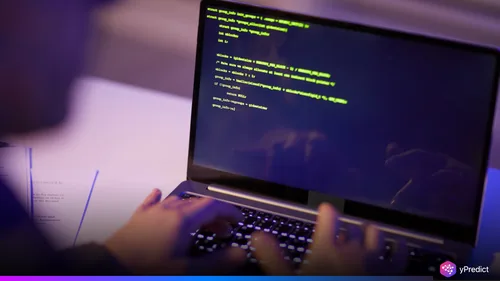
All developers share the desire to work faster, produce less bugs, and simplify product deployment. The first step in achieving this goal is to include working workflows, as part of their development. Workflows define the entire development process and allow teams to break down arduous projects into smaller manageable tasks, run those tasks in parallel, and merge code updates together without ambiguity. Workflows help everyone to keep their attention while developing and mitigate productivity loss.
When a team is working under workflows instead of a free for all approach, they are able to iterate beyond dashboards or wizards. There is even opportunity to build features and regress tests after completing a sequence of work, because workflows allow for confidence in speed and reliability. The important outcome to resolving workflow tasks is creating efficient code and shipping more reliable code faster.
Workflows are more than technical methods; they support teamwork, which encourages the development and deployment of feature changes, or bug fixes. If built correctly, workflows provide an organizational basis so developers have the freedom to write code without fear, knowing all of their updates are included in a broader scheme.
Why Strong Coding Workflows Make a Difference
A well-defined workflow sets the foundation for predictable results. Developers can take on multiple tasks without worrying about overlap or delays. By dividing projects into smaller features, teams avoid large, risky changes that may disrupt stability.
Coding workflows also create consistency. When every team member follows the same process, merging updates becomes easier. This ensures that the main branch always stays clean and ready for release. The practice saves time that would otherwise go into fixing conflicts.
Breaking Development into Manageable Features
One of the strongest practices in software development is breaking tasks into manageable features. Instead of tackling everything at once, teams focus on smaller improvements. This approach allows five or more features to run in parallel.
Feature development keeps momentum high. Each task is scoped, developed, tested, and merged independently. Once merged, the main branch remains stable, reducing the risk of broken builds. Smaller tasks also improve team morale, as developers can see quick results without long delays.
The Role of Regression Testing in Reliable Updates
Regression testing plays a critical role in maintaining software quality. Every time new code is merged, there’s a chance of old functionality breaking. Running regression tests ensures that recent changes do not affect existing features.
A cycle of development, merging, and regression testing builds confidence. Developers know that their updates won’t cause unexpected failures. This repeatable process turns coding workflows into a safety net for innovation.
Managing Bug Fixes Alongside Feature Development
No matter how structured development is, bugs are inevitable. The key lies in managing them alongside ongoing feature development. Instead of waiting for a release to address issues, bug fixes become part of the same workflow.
This balance between feature development and bug resolution ensures smooth progress. Teams can deploy new updates while maintaining stability. Coding workflows allow both activities to coexist without slowing down delivery
Iterative Cycles That Keep Projects Moving
Development should never feel stuck. Iterative cycles keep projects alive by constantly introducing improvements. After each iteration, regression tests run, bugs are fixed, and the process continues.
This rhythm prevents teams from falling into the trap of big-bang releases. Instead, updates are frequent, smaller, and easier to manage. With coding workflows supporting the cycle, developers can focus on steady progress instead of firefighting last-minute issues.
Collaboration and Team Confidence in the Workflow
Beyond technical steps, coding workflows encourage better teamwork. Developers feel confident when they know how tasks move from planning to release. Everyone works within a shared structure, which reduces confusion.
This consistency helps teams scale. New members can quickly adapt, since the workflow guides them. Collaboration becomes natural, and development speeds up without compromising quality.
Wrapping Up the Power of Coding Workflows
Effective coding workflows will revolutionize the modern approach to software development. A structured coding workflow takes confusing bundles of tasks and breaks them into manageable chunks. A structured coding workflow helps teams balance new feature work with bug fixes, while keeping regression testing as the focal point. A structured coding workflow allows teams to effectively leverage iterative development to balance improving the stability of the software while simultaneously deploying updates constantly.
Structured workflows, developers can create transparency and inclusivity, improving collaboration. The consistency and flexibility creates a space in which any time an iteration of the work and solutions create overall improvement to the product. A structured code workflow is the roadmap to building better, faster and more reliable software in the end.





